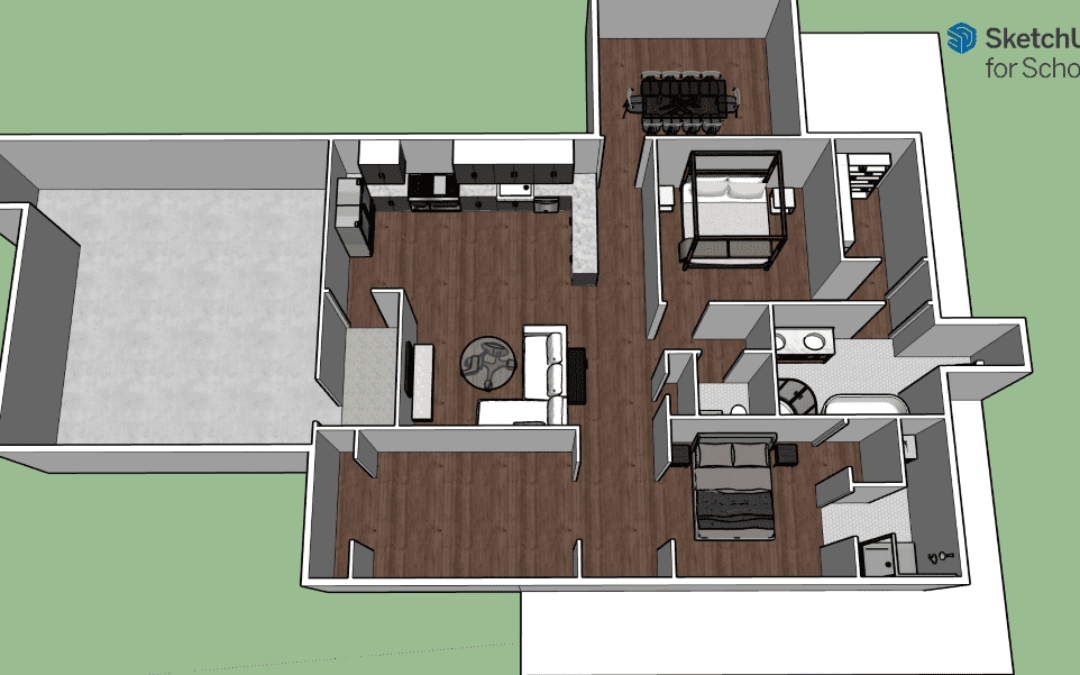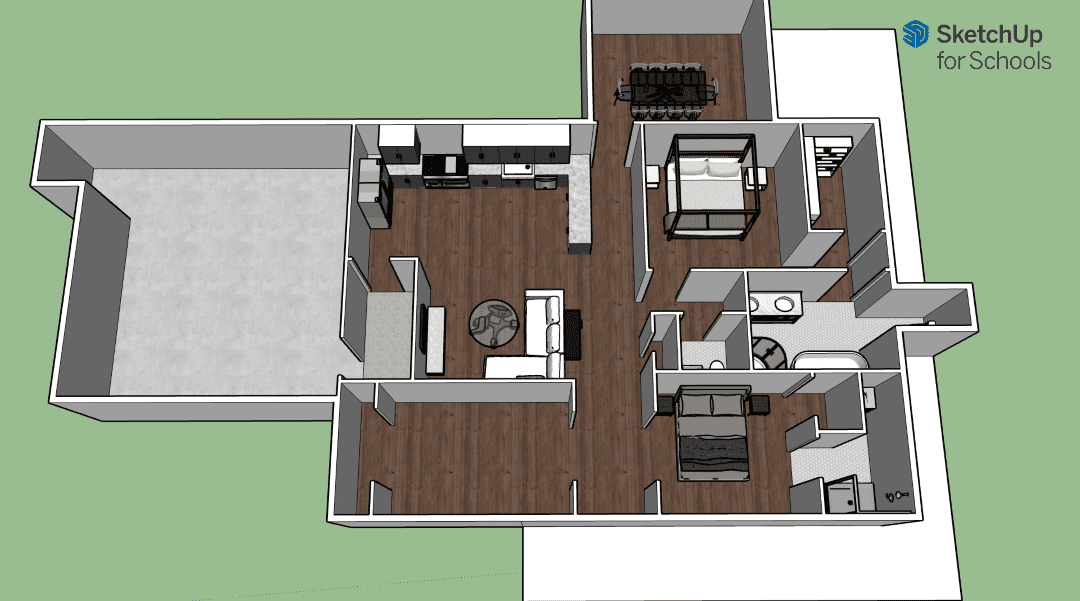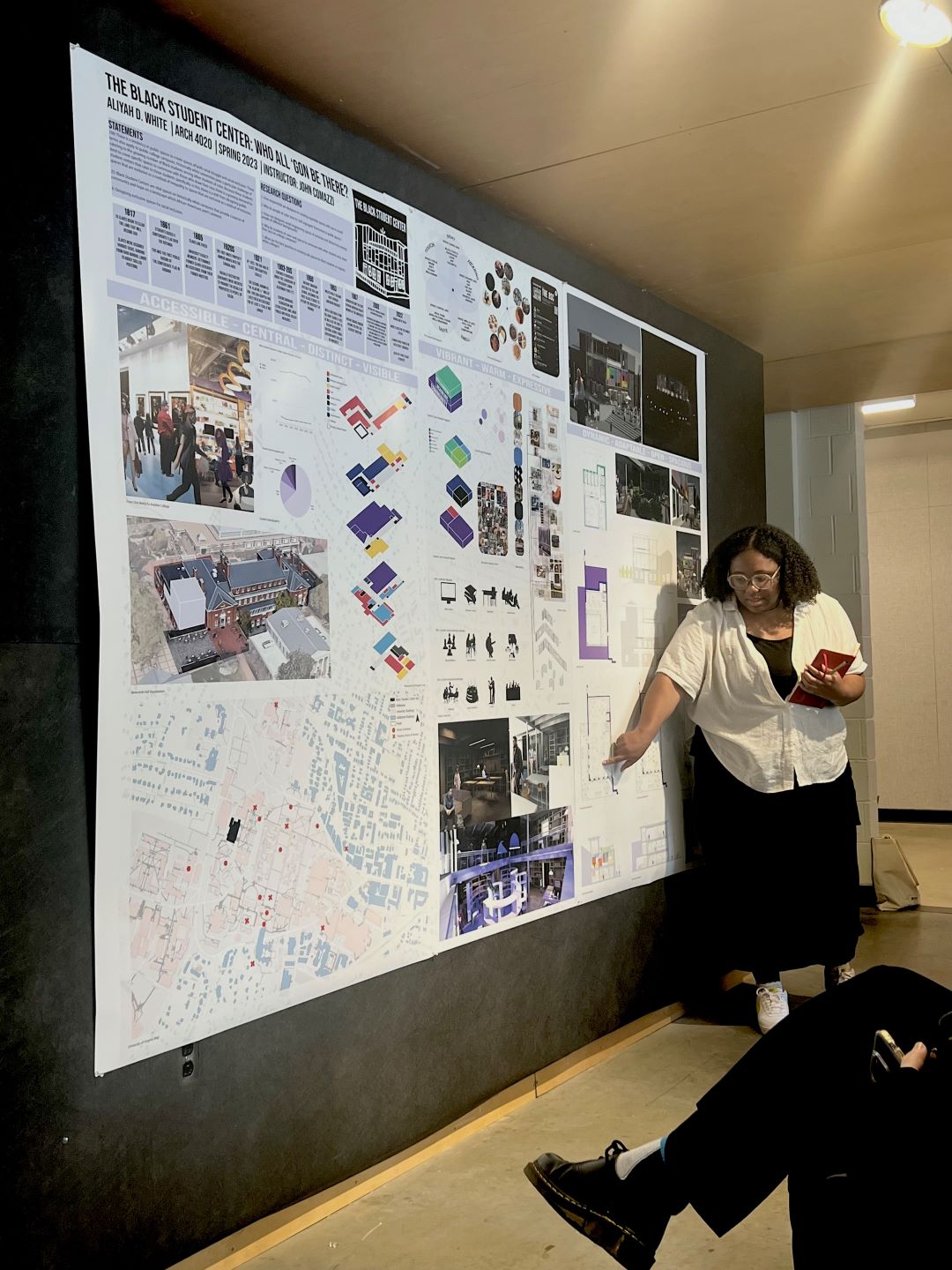
Exploring career options: A high school designers perspective
For the past 10 years or so, our firm has had high school students, and occasionally college students, here at our office to job shadow for a semester, receiving a class credit. (Check out more of their stories at the bottom of this blog). Each student comes into the experience with different goals and motivations. Some are interested in ruling out architecture as a career and others are looking to expand their knowledge of an architectural career prior to starting college. With each, we adapt their experience as needed to help them achieve their goals.
Chloe joined us this past semester. She was already confident that she wanted a career in design with a preference for interior design, so we set up a program to allow her to meet with Jarod, our interior designer, and others in the community with an interior design background. While at the office, we encouraged her to learn SketchUp by giving her a house design project to work on.
The design project is never the important part of the learning experience, it is the questions generated through the design process. Our student job shadow candidates learn how buildings operate, how the industry works, how big a 2 x 4 actually is, what kind of questions to ask when designing, and get to see how we do it. We have had some students go through the process to realize that it was not the right career for them and some that have embraced the profession and confirmed their future plans. Below you will find Chloe’s summary of her experience.


My name is Chloe Emurian, and I am a senior at Buffalo Gap High School. I have always been interested in the design of buildings, so I was placed at Gaines Group Architects with the hopes that I could find just where my passion for design falls, whether that be pursuing a major in architecture or interior design.
Starting out, my mentor, Charles Hendricks, asked me what I needed from the experience to figure out my future plans. He set up meetings with local interior designers so I could learn more about what they do each day and allowed me to attend meetings with him. He also invited me into classes at his office covering different architectural topics. Additionally, I was assigned a project to design a house using SketchUp (a design software used in many architectural and interior design firms). I learned a lot about the software (and the limitations of that software) I was using and a lot about the techniques to design a house. I am hoping as I pursue my degree, I will be able to complete my in-progress house design project. During my time at the firm I learned everything from wall thickness to how big each room should comfortably be, to even a little bit of the structural design required for stairs, second floors, and roofs.
Charles set up visits with interior designers at firms and businesses such as LDD Blueline, Dovetail Cabinetry, and more where I was able to ask designers questions about their careers, as well as talk to them about what they wish they would have known before college and how they got to where they are today.
I want to take a little bit of time to talk about an interview we were assigned as mentorship students. We were asked to interview our mentor and ask specific questions, and I got the opportunity to talk to the interior designer at The Gaines Group, Jarod. His knowledge of design and his love for his job inspired me in great ways. He graduated from the same college I am going to, Liberty University, with the same degree I am going to pursue, and his insight on that program as well as interior design will help shape me into the designer I want to be. This assignment was by far my favorite.
With all the stress of college that my senior year brought, I am so beyond thankful that I was placed at a firm that solidified both my college decision and my career interest. After my mentorship experience, I decided that I am going to pursue a major in interior design at Liberty University. Finally, mentorship has taught me that I am capable of way more than I ever imagined. My mentor has done an amazing job helping me realize how successful I can be; he has shown me ways that I can begin to make a name for myself now by setting up my own personal website and blog. His encouragement and confidence in me have boosted my confidence in achieving my dreams. I am beyond thankful for the opportunities that mentorship presented me, and I can’t wait to see how my future unfolds because of it!
We strongly believe that mentorship is a key part of being a Citizen Architect. Giving back to future generations through On the Road Collaborative or Massanutten Technical Center Summer Academy are keys to this. We also love when we are able to host a student in our office just for a few hours or an entire semester, so please reach out if you know a student who might be interested.
Blogs from previous Job Shadowing Students:
Job shadowing virtually from the university of miami
Job shadowing with gaines group
Learn how job shadowing informs career path
High school students should job shadow
A story of job shadowing during a pandemic
Why you should job shadow while still in high school #futurearchitect
What do you want to be when you grow up?
Exploring a career in architecture: a students perspective
A story of career development by a blue ridge community college student



